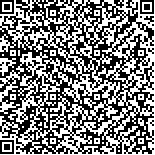陆海源,苏迪,张洁,等.电刺激大鼠耳廓对心脏迷走神经的调节作用及其神经机制[J].中华物理医学与康复杂志,2019,41(6):401-406
扫码阅读全文

|
| 电刺激大鼠耳廓对心脏迷走神经的调节作用及其神经机制 |
|
| |
| DOI:DOI:10.3760/cma.j.issn.0254-1424.2019.06.001 |
| 中文关键词: 电刺激 耳廓 迷走神经 心率 |
| 英文关键词: Electrical stimulation Auricle Vagus nerve Heart rate |
| 基金项目:国家自然科学基金(81670308) |
|
| 摘要点击次数: 6399 |
| 全文下载次数: 8606 |
| 中文摘要: |
| 目的 比较电刺激大鼠耳廓不同部位对心脏迷走神经的调节作用,并探讨电刺激耳廓引起心脏效应的初级神经机制。 方法 对24只SD雄性大鼠的耳屏、耳甲、耳轮分别以不同强度(0~16 mA)和不同时间(0~15 min)进行电刺激,观察大鼠心电图中心率变化。完成电刺激后1周,将24只大鼠按随机数字表法分为耳屏注射组(n=6)、耳甲注射组(n=6)、耳轮注射组(n=6)和对照组(n=6),前3个实验组均在大鼠右侧耳廓相应部位注射2 μL的Alexa Fluor 555共轭结合的霍乱毒素B亚单位(CTB-AF555),对照组在右侧耳屏处注射2 μL无菌磷酸盐缓冲液(PBS)。术后5 d,处死大鼠取右侧迷走神经上下神经节及整个延髓,观察CTB-AF555标记情况。 结果 大鼠心率可随刺激耳屏或耳甲的强度和时间增加而下降,但不随刺激耳轮的强度和时间增加而变化。一定刺激时间下,与相同电流强度刺激耳轮比较,以12、14和16 mA刺激耳屏和10、12、14和16 mA刺激耳甲时心率明显减慢(P<0.05);与相同电流强度刺激耳屏比较,以12 mA刺激耳甲时心率明显减慢(P<0.05)。一定刺激强度下,与刺激耳轮同时间点比较,在刺激耳屏6~15 min和刺激耳甲4~15 min时心率明显减慢(P<0.05);与刺激耳屏同时间点比较,刺激耳甲6~10 min时心率明显减慢(P<0.05)。耳屏注射组和耳甲注射组的所有大鼠均可在迷走神经上下神经节观察到CTB-AF555示踪剂;耳屏注射组6只大鼠中3只(3/6)可在孤束核(NTS)观察到示踪剂;耳甲注射组6只大鼠中4只(4/6)可在NTS观察到示踪剂;耳轮注射组6只大鼠中5只(5/6)在脊束核观察到示踪剂,但未在NTS及上下神经节找到神经示踪剂。 结论 电刺激耳甲和耳屏均可调节心脏迷走神经功能,但刺激耳轮没有此调节功能,其机制与刺激耳屏或耳甲的神经信号及心脏感觉神经信号在迷走神经下神经节整合后再进入延髓中枢分析处理有关。 |
| 英文摘要: |
| Objective To compare the regulating effect of electrically stimulating different parts of the auricle on the cardiac vagus nerve in rats, and to explore the basic neural mechanism. Methods The tragus, concha auriculae and helix of 24 male Sprague-Dawley rats were stimulated at different intensities (0-16 mA) and with different durations (0-15 min) and any changes in the heart rate were observed. One week later, the rats were randomized into a tragus injection group, a concha auriculae injection group, a helix injection group and a control group, each of 6. The rats of the first three groups were injected with 2 μL of cholera toxin subunit B conjugate AF555 (CTB-AF555) at the right auricle, while the control group was injected with the same amount of aseptic phosphate-buffered saline at the right tragus. Five days later, all of the rats were sacrificed and their right superior and inferior ganglia and the whole bulbus medullae were resected to observe the fluorescent labeling sites. Results The rats′ heart rate declined with longer and more intense stimulation of the tragus or concha auriculae, but not with stimulation of the helix. With stimulation of the same duration, a significant decrease was observed in the heart rate when the tragus and concha auriculae were stimulated at 10, 12, 14 or 16 mA compared with when the helix was stimulated at the same intensities. The heart rate when the concha auriculae was stimulated at 12 mA was significantly slower than when the tragus was stimulated at the same intensity. At identical stimulus intensities, the heart rate slowed significantly more when the tragus was stimulated for 6 to 15 minutes and the concha auriculae for 4 to 15 minutes compared with stimulating the helix for the same length of time. And compared with stimulating the tragus for 6 to 10 minutes, the heart rate decreased significantly more when the concha auriculae was stimulated for the same length of time. All of the rats in the tragus and concha auriculae injection groups displayed nerve tracer in their superior and inferior ganglia. In the tragus injection group, CTB-AF555 was observed in the nucleus tractus solitarius (NTS) of 3 of the 6 rats. In the concha auriculae injection group it was observed in 4 of the 6. In the helix injection group, CTB-AF555 was observed in the nucleus of the spinal tract in 5 of the 6 rats, but no nerve tracer was found in their superior or inferior ganglia or in the NTS. Conclusion Electrical stimulation of the tragus and concha auriculae can regulate the functioning of the cardiac vagus nerve, but stimulating the helix cannot. This is partly because the nerve signals in tragus or concha auriculae stimulation and the cardiac sensory nerve signal are integrated in the inferior ganglion and then analyzed and processed in the bulbar center to monitor the heart. |
|
查看全文
查看/发表评论 下载PDF阅读器 |
| 关闭 |
|
|
|